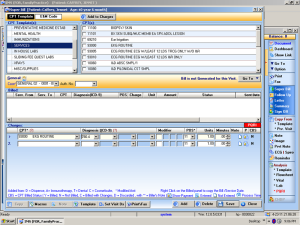EMR software is a godsend for the healthcare industry, especially billing and reimbursement. Electronic Medical Record (EMR) software simplifies the headache of collecting bill slips, checking them against insurance, and filling for reimbursement.
The Evolution of Billing in Healthcare
In the past, healthcare providers relied heavily on paper-based documentation, making the billing process cumbersome and error-prone. Manual data entry, the need for physical storage space, and the risk of lost or damaged records were just a few of the issues plaguing the traditional billing approach.
The advent of technology brought about a shift towards electronic solutions, and EMR software emerged as a game-changer in the healthcare industry. This digital transformation not only improved the accuracy of patient records but also paved the way for more efficient billing processes.
The Role of EMR Software in Billing
Automated Billing Processes
One of the primary advantages of using EMR software for billing is the automation of processes. Manual billing is time-consuming and increases the likelihood of errors. EMR software streamlines the entire billing cycle, from capturing patient information to generating invoices. Automated billing reduces the risk of inaccuracies, ensuring that claims are submitted with precision and speed.
Integration with Insurance Systems
EMR software often comes equipped with features that allow seamless integration with insurance systems. This integration facilitates real-time eligibility checks, claims processing, and electronic submission of claims. By eliminating the need for manual paperwork and reducing the turnaround time for claims, healthcare providers can accelerate the reimbursement process.
Streamlined Documentation
Effective billing relies on accurate and comprehensive documentation. EMR software centralizes patient records, making it easier for healthcare providers to access and update information. This centralized approach ensures that billing codes are assigned correctly, reducing the chances of claim denials. Additionally, streamlined documentation enables healthcare organizations to maintain compliance with regulatory requirements.

Billing EMR Software
Benefits of Easy Billing Through EMR Software
Increased Efficiency
The automation of billing processes through EMR software significantly enhances the overall efficiency of healthcare operations. Tasks that once took hours or even days can now be completed in a fraction of the time. This efficiency not only reduces administrative burdens but also allows healthcare professionals to focus more on patient care.
Error Reduction
Manual billing processes are inherently prone to errors, which can lead to claim denials and delayed payments. EMR software minimizes the risk of errors by automating data entry and validation. The use of standardized codes and templates ensures consistency in billing practices, reducing the likelihood of mistakes and improving the accuracy of claims.
Faster Reimbursement
The integration of EMR software with insurance systems expedites the reimbursement process. Real-time eligibility checks and electronic claims submission result in faster processing and payment cycles. This not only improves cash flow for healthcare providers but also enhances the overall financial health of the organization.
Enhanced Patient Experience
Easy billing through EMR software contributes to a positive patient experience. Billing transparency, accurate invoicing, and timely communication regarding financial matters foster trust between healthcare providers and patients. Patients appreciate the convenience of electronic billing systems, which allow them to view and manage their invoices online.
Challenges and Considerations
While the benefits of using EMR software for billing are evident, healthcare organizations must be mindful of potential challenges and considerations. These may include the initial implementation costs, staff training, and ensuring compliance with evolving healthcare regulations. However, the long-term advantages often outweigh these challenges, making the investment in EMR software a strategic decision for healthcare providers.
Implementation Costs
The upfront costs associated with implementing EMR software can be a significant consideration for healthcare organizations, particularly smaller practices. However, it’s crucial to view this as a long-term investment that pays off through increased efficiency, reduced operational costs, and improved revenue capture.
Staff Training
Transitioning to EMR software requires adequate training for healthcare staff. Training programs should address not only the technical aspects of using the software but also the new workflows and processes associated with electronic billing. Proper training ensures that the entire team is proficient in utilizing the software to its full potential.
Regulatory Compliance
Healthcare regulations are subject to change, and it’s essential for organizations using EMR software to stay current with compliance requirements. Regular updates and training on regulatory changes help healthcare providers maintain the integrity and security of patient data, ensuring that billing practices align with industry standards.








